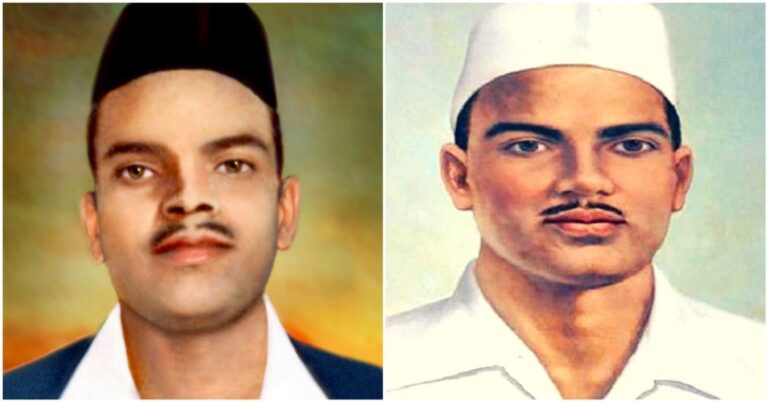![]()
Shivaram Rajguru and Sukhdev Thapar, alongside Bhagat Singh, were instrumental in striking fear into the heart of the British Empire and infusing fresh energy into India’s fight for independence. Despite their monumental contributions, their legacies have been overshadowed by Bhagat Singh’s fame. This is a tribute to the forgotten heroes who, nearly eighty-seven years ago on March 23, 1931, marched to the gallows with smiles on their faces and “Inquilab Zindabad” on their lips.
Executed for their roles in the Lahore Conspiracy Case, each member of the trio played an equally crucial role in reinvigorating the struggle against British colonial rule. Yet, over the years, the heroics of Rajguru and Sukhdev have often been overlooked.
Sukhdev Thapar: The Silent Revolutionary
Born on May 15, 1907, in Ludhiana, Sukhdev Thapar was raised by his uncle after his father’s untimely death. From a young age, Sukhdev witnessed the brutal atrocities of British colonial rule. As a student at Lahore’s National College, founded by Lala Lajpat Rai, Sukhdev delved into India’s history and revolutionary movements around the world. It was here that he met Bhagat Singh, and together they were inspired by Lala Lajpat Rai and historian Jai Chand Vidyalankar.
The group of friends founded the Naujawan Bharat Sabha, aiming to encourage youth participation in the freedom struggle, promote rational scientific thinking, and eradicate social evils like communalism and untouchability. Sukhdev, along with Bhagat Singh and others, quickly rose to national prominence as members of the Hindustan Socialist Republican Association (HSRA), organizing revolutionary cells across North India.
Sukhdev played a significant role in several revolutionary activities, most notably in the Lahore Conspiracy Case, which sealed his fate as a martyr.
Shivaram Rajguru: The Fiery Patriot
Born on August 24, 1908, in Khed, Maharashtra, Shivaram Rajguru grew up witnessing the exploitation and injustices of the British Raj. These experiences fueled his desire to join the fight for India’s freedom. Inspired by Chandrashekhar Azad, Rajguru became a member of the HSRA, where he met Bhagat Singh and Sukhdev. The trio’s revolutionary activities soon struck fear into the British establishment.
The assassination of Assistant Superintendent of Police John Saunders, in retaliation for the death of Lala Lajpat Rai, marked one of the most significant actions of the HSRA. This act of vengeance led to the trio’s arrest and subsequent execution.
In their last years in jail, Bhagat Singh, Sukhdev, and Rajguru fought one of the most celebrated legal battles in India’s liberation struggle, using the court as a platform to highlight the inhuman conditions faced by political prisoners in colonial jails.
A Legacy Worth Emulating
On March 23, 1931, at just 23 years old, Sukhdev and Rajguru, along with Bhagat Singh, were hanged for their revolutionary activities. Their extraordinary commitment to the cause of freedom is a legacy worthy of emulation. Yet, the memories of Rajguru and Sukhdev have struggled to survive, with the restoration and maintenance of their ancestral homes caught in bureaucratic red tape.
It is time to move beyond mere lip service and truly honor their sacrifices by adopting the values they embodied—deep love for the nation, dedication to a cause, and an unquenchable thirst for knowledge—in our own lives.
As Bhagat Singh once said, “Bombs and pistols do not make revolution. The sword of revolution is sharpened on the whetting stone of ideas.” Let us remember and honor the ideas and ideals of Rajguru and Sukhdev, the unsung heroes of India’s freedom struggle.







